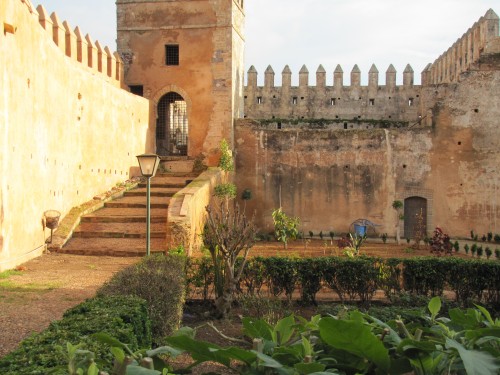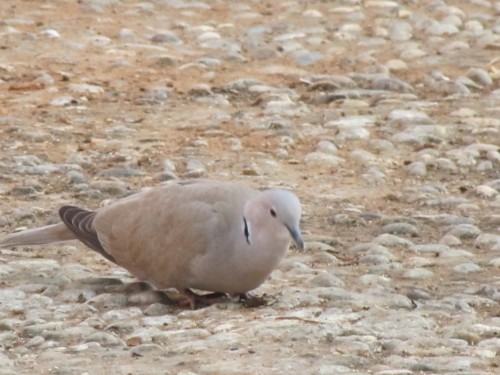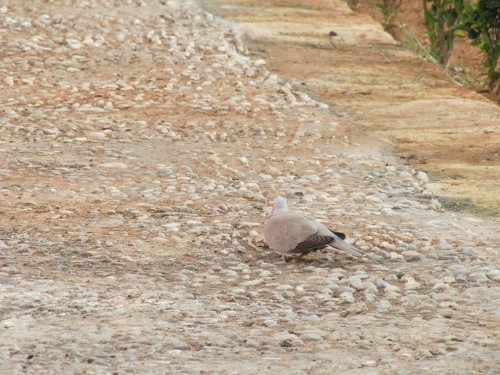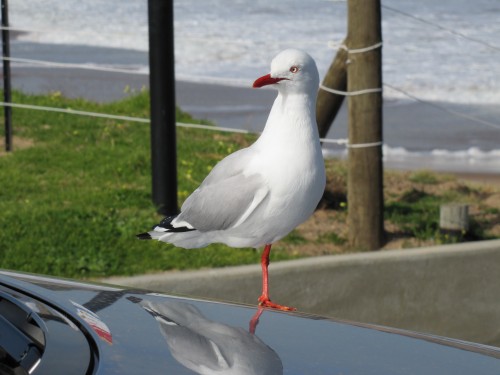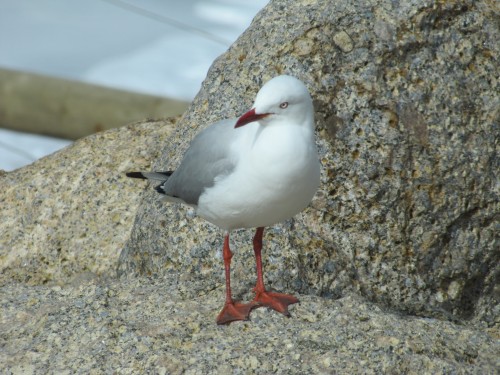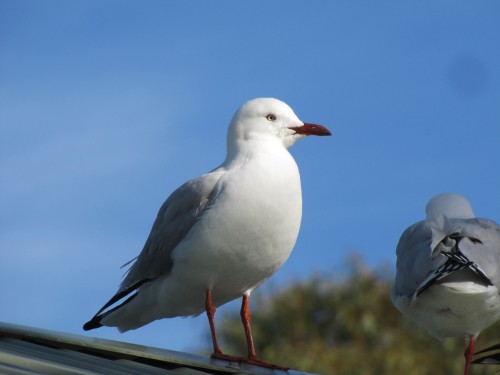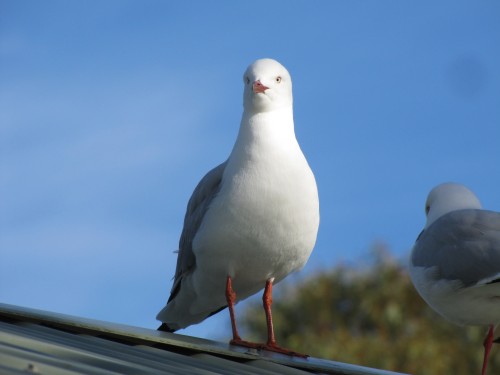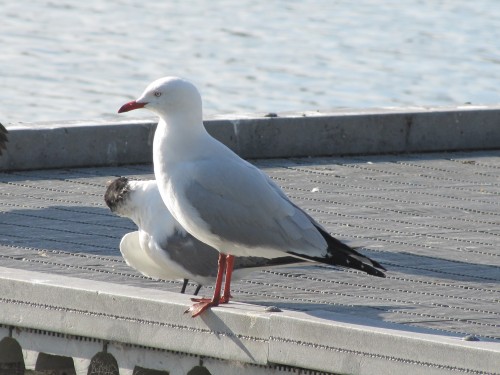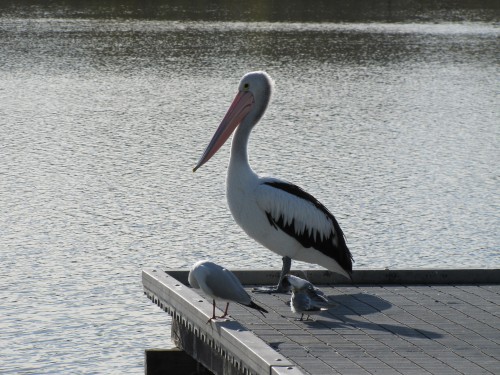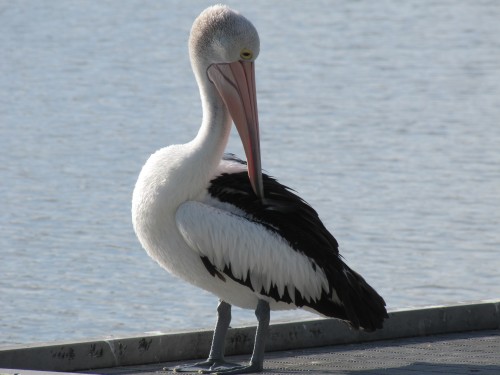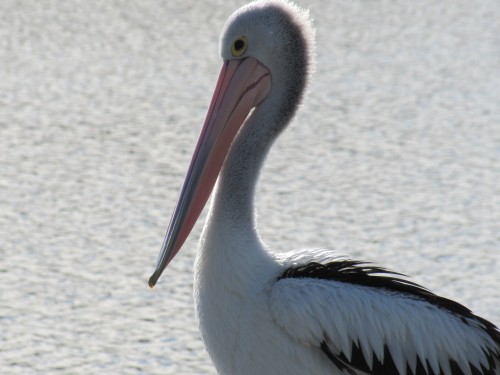Collared Dove, Rabat, Morocco
On our guided tour of Rabat in Morocco we walked through the interesting walled quarter known as the Kasbah des Oudaias. A part of this quarter was this beautiful garden. In the garden I managed a few hurried photos of a Collared Dove, shown below.
I use the expression “hurried photos” deliberately. The bird was moving around constantly, not stopping for more a a second or two in any one spot, making focussing something of a challenge, even though the bird was quite close. The bird won.
Still, it was nice to add another species to my list of Moroccan birds.
Bird photography
Photos on this site
I must admit that this site would be much poorer and quite uninteresting for readers without the photos I include with most of my posts. The vast majority of the articles I post here are illustrated by at least one photo; sometimes as many as 4 or 5. In fact, the photos I take are usually the reason for posting an article, that is, the words result from the photos taken.
Early photographic attempts
In my early years of birding I bought a cheap SLR camera which took reasonable scenery photos, all in 35mm slide format. This was in the pre-digital era, the 1980s. I also invested in a telephoto lens in order to take bird and wildlife photos, along with a cumbersome tripod. The results were mixed – many taken with the telephoto lens were poor and mostly unusable here. (As an aside, my son has recently completed scanning all of these early slides into digital format. I plan to use the best of them on this site later in the year.)
First digital camera
In the late 1990s I acquired my first digital camera, a very basic Kodak point and shoot. It gave me a renewed enthusiasm for photography. I can’t remember much about the details of this camera, but a little research found the user’s manual to the Kodak Easyshare CX4200 digital camera which was a 2megapixel point and shoot. It only had a 2x digital zoom, virtually useless for bird photography.
Canon SX2 IS
In 2005 I was preparing to go trekking in Nepal. I upgraded to a Canon Powershot SX2 IS. This was a huge jump forward because now I had 12x optical zoom and 5megapixals to play with. It was lightweight, easy to use and took some fabulous photos of the Himalayas. It also opened up many possibilities for bird and wildlife photography. It was about then that this bird site commenced.
Canon SX20 IS
In 2011 my wife and I were preparing for another overseas holiday, this time in Ethiopia, Morocco and Spain. While the main purpose was to visit our daughter who was teaching in Ethiopia, it was also highly focussed on doing the tourist thing. Bird photography was not the main aim; any birds seen and photographed along the way was an incidental bonus.
Well before the trip I upgraded to a Canon SX20 IS and my wife took over the SX2. Between us we managed about 8000 photos in six weeks, including some great bird shots. The 20x optical (plus 4x digital making it effectively 80x) zoom on my new camera gave me so much more flexibility and is proving its worth almost every day while taking photos in our garden, and around our district. I am planning several more major caravanning trips this year, and these will always be where I can get more bird photos.
And as an added bonus, the camera is perfect for taking great shots of my two grandchildren, age 4 and 17 months.
An excellent article
Yesterday I came across an excellent article on using point and shoot cameras for bird photography. Interestingly, the author also uses the Canon SX50 which has a great 50x zoom. Mmm.. I wonder if my wallet can stand another assault? I almost feel the need to upgrade. You can read the article Birding with a point and shoot camera here.
Further reading:
- How to be a birder part 14 – part of a series I wrote some years ago
- How to be a birder – index of the whole series
- I have a new camera – first impressions of the Canon SX20
One legged Silver Gull at Horseshoe Bay
Every now and then I see a gull with part of a leg missing. The birds with this disability were probably attached by a fish or shark at some stage. Despite not being totally intact, they seem to manage quite well.
On a recent visit to the south coast of South Australia – Horseshoe Bay near Victor Harbor, we saw the gull featured above with only one leg. again, it seemed to be in top notch health and coping really well.
Below I have included a few more photos of Silver Gulls taken at the same time. This continues my photographic fascination with this very common species.
Silver Gulls, Sturt Reserve, Murray Bridge
I know that Silver gulls are very common throughout Australia, but I must admit that I always enjoy taking photos of them. Generally, they are not at all afraid of humans (except for those over-active little versions who insist on chasing them), so they are usually very easy photographic subjects to practice on. On my recent visit to the local Sturt Reserve I managed several acceptable shots of some of the gulls, as shown here on this post today.
Silver Gulls, despite often acting as garbage disposal units on beaches, river banks and picnic areas, are quite beautiful birds in my view. They have such clean lines and pure colours. I usually forget their scavenging habits and concentrate on the positive aspects of their appearance.
Australian Pelican at Sturt Reserve
A few days ago I took some time out of my busy schedule and drove down to Sturt Reserve near the centre of town. I had a reason to take my camera with on this occasion which was just as well because I saw and photographed quite an interesting range of our local birds.
This Australian Pelican posed or me on the end of a small jetty near the reserve. With the mid-morning sun coming from behind it gives an interesting effect.
